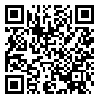BibTeX | RIS | EndNote | Medlars | ProCite | Reference Manager | RefWorks
Send citation to:
URL: http://journal.nkums.ac.ir/article-1-375-en.html
Abstract Background & Objective:Amblyopia is a visual disorder that occurs in childhood and due to some complication such as visual acuity (visual error), strabismus and psychosocial disturbances on time diagnosis and treatment is of great importance. For this issue, this study was performed to determining prevalence of amblyopia in 3-6 years old children in Bojnurd. Materials & Methods:This study was a cross sectional in 14061 children in Bojnurd. Screening instruments in this study was Snellen chart and standard questionnaire of state program of amblyopia. Children who were abnormal in visual screening, referred to ophthalmologist. The best reform visual was or less in any eyes, defined as amblyopia. Results:Of all participants, 12935 children (92%) healthy and 1126 (8%) was suspicious and referred to ophthalmologist. Of all referred participants, 69 children (11.8%) has amblyopia, 133 (22.8%) children had reflective errors, 11 (1.8%) was strabismus and other (1.03%) given other visual disease. Reflective errors with 78.2% was the most prevalent cause of amblyopia and so strabismus and other disease. Conclusion:The results of this study are in line with other studies in Iran , underlining high prevalence of ambylopia in childhood ages, and capability of prevention and effective treatment, according to removable reasons, provided on time diagnosis .
Received: 2015/03/28 | Accepted: 2015/03/28 | Published: 2015/03/28
| Rights and permissions | |
 |
This work is licensed under a Creative Commons Attribution-NonCommercial 4.0 International License. |





